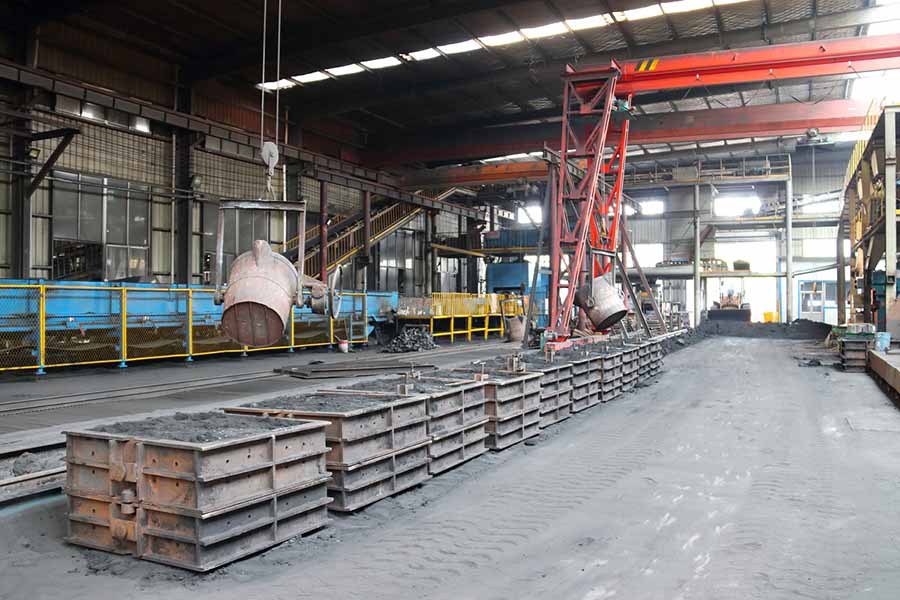According the difference of the sand used for making the casting molds, sand casting process could be divided into many different kinds, such as green sand casting, coated sand casting (shell casting), self-hardening sand casting and dry sand casting (lost foam casting and vacuum casting). This article we will mainly introduce the following three sand casting processes:
Green Sand Casting
The green sand is basically a wet mixture of sand and clay, no chemical is added. The sand mold is squeezed together and holds its shape. The choice of sand has a lot to do with the temperature at which the metal is poured. At the temperatures that copper and iron are poured, the clay gets inactivated by the heat, which is a non-expanding clay. So instead, those that pour iron typically work with silica sand that is inexpensive compared to the other sands.
Resin-coated Sand Shell Casting
Resin binders are natural or synthetic high melting point gums. There are also cold-set resins, which use a catalyst instead of a heat to cure the binder. Resin binders are quite popular because different properties can be achieved by mixing with various additives. Other advantages include good collapsibility, low gassing, and they leave a good surface finish on the casting. Shell mold casting process offers better surface finish, better dimensional tolerances, and higher throughput due to reduced cycle times. The materials that can be used with this process are cast irons, and aluminum and copper alloys. The shell molding casting process produces cost savings solutions for difficult shapes, pressure vessels, weight sensitive parts, and castings requiring superior surface finishes.
Self-hardening Sand Casting
"Self-hardening sand" is a term that appeared after the foundry industry adopted chemical binders. In the sand mixing process, in addition to adding a binder, a solidifying (hardening) agent that can harden the binder is also added. After molding and core making with this kind of sand, no treatment (such as drying or blowing hardening gas) is used to harden the mold or core, and the mold or core can harden by itself.
Because the mold is formed at room temperature and no need to heat, the self-hardening sand casting is also called no-bake casting process. The self-hardening method can be divided into acid-catalyzed furan resin and phenolic resin sand self-hardening method, urethane resin sand self-hardening method and phenolic monoester self-hardening method.
Furan resin self-hardening sand casting process (nobake process) uses the furan resin coated sand to form the casting mold. After mixing the original sand (or reclaimed sand), liquid furan resin and liquid catalyst evenly, and filling them into the core box (or sand box), and then tighten it to harden into a mold or mold in the core box (or sand box) at room temperature. Then the casting mould or casting core were formed, which is called self-hardening cold-core box molding (core), or self-hardening method (core).
Post time: Nov-06-2021


